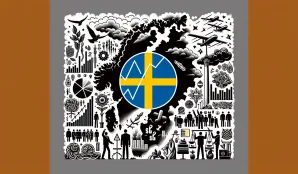Inflation
- Articles
- Inflation
The Impact of Inflation on Swedish Households: An Analysis of the Latest Figures
In the latest report from Statistics Sweden (SCB), it is revealed that the Consumer Price Index with a fixed interest rate (KPIF) has decreased to 2.2% in March 2024, down from a higher level of 2.5% the month before. This decline in the inflation rate can have significant effects on everything from household purchasing power to future interest rate decisions from the Riksbank.
Historical Overview and Current Inflation
Looking back over the past two years, KPIF inflation has steadily decreased from a peak of 10.2% in December 2022 to today's 2.2%. The traditional CPI inflation, which does not adjust for interest costs, also shows a similar downward trend, from 12.3% in December 2022 to 4.1% in March 2024.
Effects on Interest Rates and Loan Costs
With a stable repo rate of 4% since December 2023, and a decrease in inflation, we can speculate that the Riksbank may soon lower interest rates if the trend continues. This could lead to lower interest costs for Swedish borrowers.
Mortgage Calculation
Let's calculate the monthly cost of a mortgage with different loan amounts, based on the current repo rate plus a 1% markup:
- 1 million SEK: Interest (5%) results in an annual interest cost of 50,000 SEK, or approximately 4,167 SEK per month.
- 3 million SEK: Interest (5%) results in an annual interest cost of 150,000 SEK, or approximately 12,500 SEK per month.
- 5 million SEK: Interest (5%) results in an annual interest cost of 250,000 SEK, or approximately 20,833 SEK per month.
Expectations for Food, Fuel, and Energy Prices
With declining inflation, we can expect the rate of price increases for goods such as food, fuel, and energy to also decrease. This could provide much-needed relief for Swedish consumers who have seen high prices in these areas in recent years.
Conclusion and Future Outlook
The current decrease in inflation is a positive sign for the Swedish economy. If the trend continues, it could lead to lower interest rates and thus lower loan costs for Swedish households. This could also contribute to increased purchasing power and economic stability.
It remains to be seen how the Riksbank will react to these figures in its upcoming decisions on the policy rate. But for now, Swedish consumers and borrowers can have a cautious optimism about a brighter economic future.
Sweden's national debt





